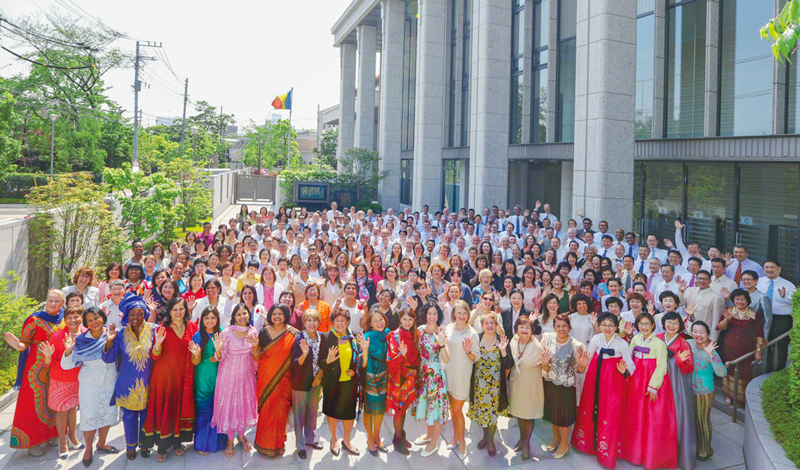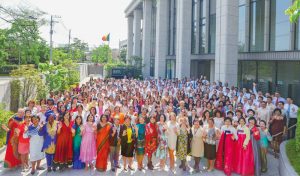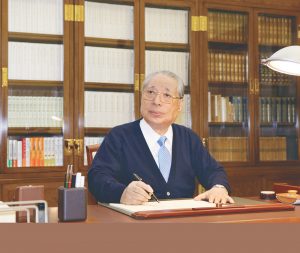The Soka Gakkai began as an organization of reformist Japanese educators inspired by the philosophy of Nichiren Buddhism. Its founder and first president, Tsunesaburo Makiguchi (1871–1944), was driven by a passion to enable people to lead fulfilled and happy lives. During World War II, he was imprisoned with his protégé, Josei Toda (1900–58), by the Japanese militarist government for opposing its policies. Makiguchi died in prison from malnutrition and old age, while Toda emerged to rebuild the Soka Gakkai as a Buddhist movement to empower people suffering in the aftermath of the war. Daisaku Ikeda (1928– ) inherited Toda’s vision, going on to develop the organization into a multifaceted movement for peace, culture and education with members around the world.
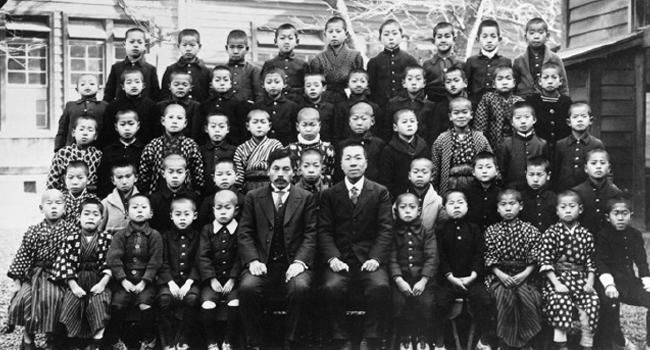
1930 | Soka Gakkai Founded
The Soka Gakkai (literally “Society for the Creation of Value”) was founded on November 18, 1930, as a study group of educators. It was initially called the Soka Kyoiku Gakkai (Society for Value-Creating Education). Its founder and first president, Tsunesaburo Makiguchi, was an author and educator inspired by Nichiren Buddhism and passionately dedicated to the reform of Japanese education. His theory of value-creating education was focused on the development of independent thinking and the unlimited potential of every child.
November 18, 1930, the date of the publication of the first volume of Makiguchi’s Soka kyoikugaku taikei (The System of Value-Creating Pedagogy), has come to be regarded as the founding day of the Soka Gakkai.
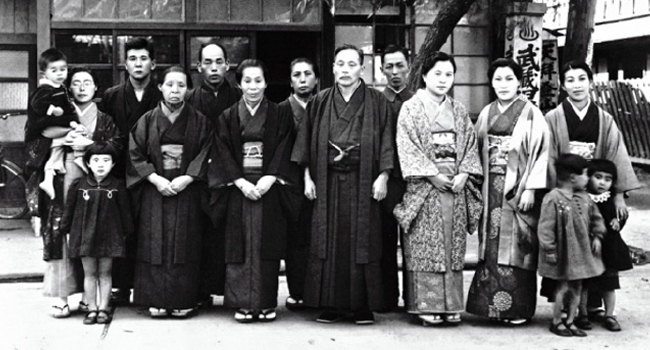
1937 | Social Reform
Makiguchi’s emphasis on independent thinking over rote learning in education challenged the Japanese authorities of the time, who saw the role of education as molding docile servants of the state. Makiguchi and his closest associate, Josei Toda, led the development of the Soka Kyoiku Gakkai from its origins as a group of educators dedicated to educational reform into an organization with a broader membership of several thousand, with a focus on the propagation of Nichiren Buddhism as a means to reform society through individual transformation.
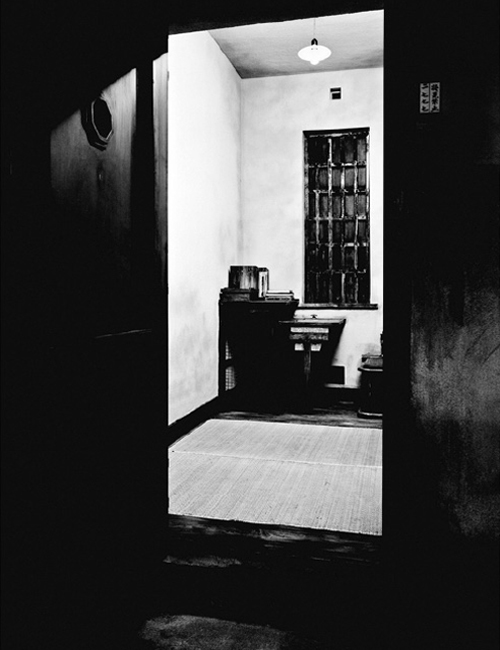
1943 | Fighting Government Oppression
The 1930s had seen the rise of militaristic nationalism in Japan, culminating in Japan’s entry into World War II in 1941. The government imposed the State Shinto religion on the population as a means of glorifying its war of aggression and cracked down on all forms of dissidence. The refusal of Makiguchi and Toda to compromise their beliefs and lend support to the regime led to their arrest and imprisonment in 1943 as “thought criminals.” Due to government suppression, the organization was effectively crushed.
1944 | Death of Tsunesaburo Makiguchi
Despite attempts by his interrogators to persuade him from his principles, Makiguchi held fast to his convictions and died in prison on November 18, 1944.
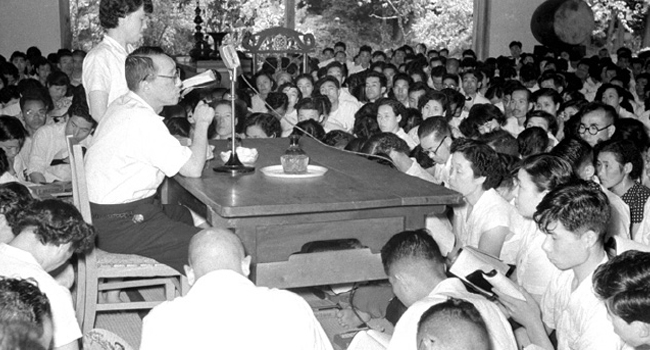
1945 | Active, Socially Engaged Buddhism
Josei Toda survived and was released from prison on July 3, 1945, shortly before the war ended. While in prison, Toda had studied the Lotus Sutra and chanted Nam-myoho-renge-kyo intensely, reaching the revolutionary insight that “the Buddha” is life itself. He developed the conviction that it was his mission to spread the message of the Lotus Sutra as widely as possible and resolved to dedicate the remainder of his life to this endeavor.
Toda set out to rebuild the Soka Gakkai amid the confusion of postwar Japan and became its second president in 1951. He promoted an active, socially engaged practice of Buddhism as a means of self-empowerment—a way to overcome obstacles in life and tap inner hope, confidence, courage and wisdom.
Toda used the term “human revolution” to express the central idea of Nichiren Buddhism: that all people can change their lives for the better and attain enlightenment in this lifetime. This message resonated especially among the most disenfranchised of Japanese society, and membership grew rapidly.
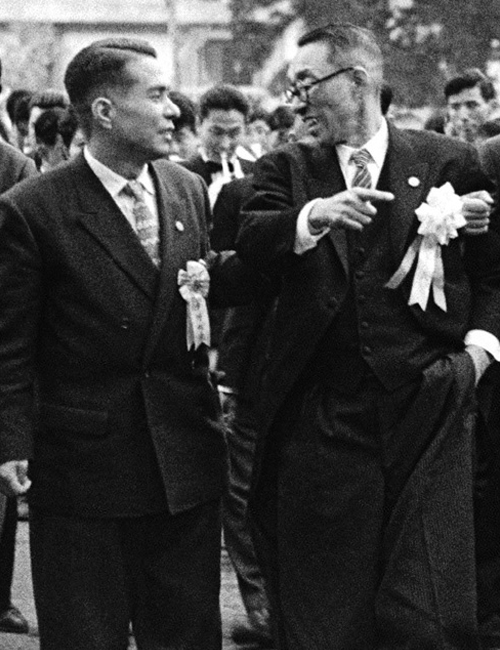
1957 | Call for Nuclear Abolition
On September 8, 1957, forcefully proclaiming that all human beings have an inviolable right to live, Toda made an impassioned declaration calling for the abolition of nuclear weapons, which he described as a manifestation of the darkest aspects of the human heart. He asked the youth of the Soka Gakkai to work for their abolition, and this became the symbolic start of the organization’s activities for peace.
In a ceremony on March 16, 1958, Toda entrusted the future development of the Soka Gakkai to the youth of the organization. Among the youth, his closest follower, Daisaku Ikeda, who had spearheaded efforts to spread the philosophy of Nichiren Buddhism, emerged as the future leader of the organization.
By the time of his death on April 2, 1958, Toda had led the transformation of the Soka Gakkai into a dynamic movement with a membership of over 750,000 households throughout Japan.
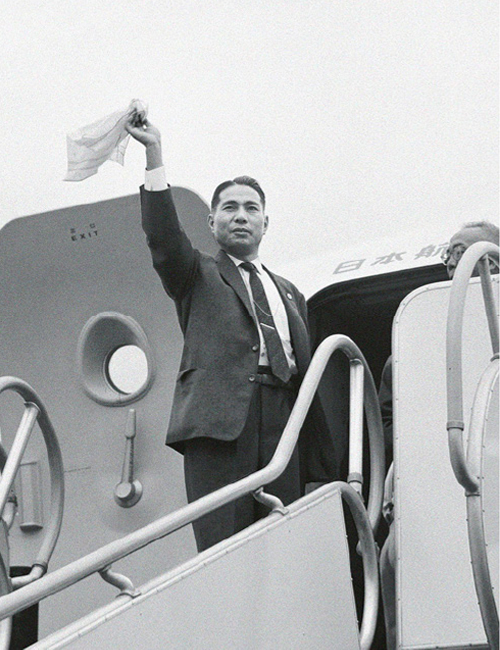
1960 | A Worldwide Movement
Toda was succeeded as president in 1960 by Daisaku Ikeda, then aged 32. Ikeda solidified the structure of the Soka Gakkai in Japan and also started to build the foundations of a global movement, traveling overseas to meet with and encourage the first Soka Gakkai members living outside Japan. These members pioneered the development of the Soka Gakkai in their various countries, leading to the growth of an international membership.
To help build solidarity for peace, Ikeda also founded a number of affiliated institutions in the fields of culture and the arts, peace research and education.
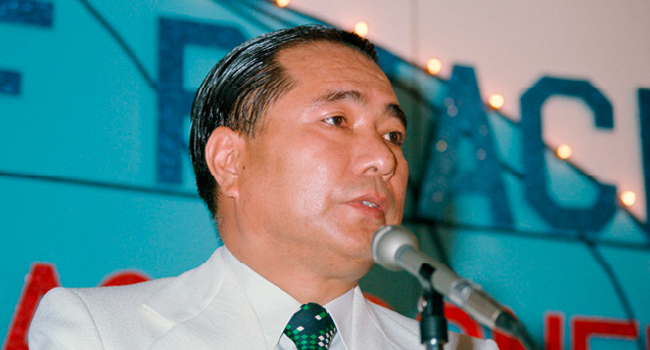
1975 | A Global Association
In 1975, the Soka Gakkai International (SGI) was founded as a global association, linking independent Soka Gakkai organizations around the world. Daisaku Ikeda became its president.
In 1983, the SGI was accredited as a nongovernmental organization (NGO) in consultative status with the United Nations Economic and Social Council (ECOSOC).
The SGI Charter was adopted in 1995, expressing the association’s commitment to strive for a peaceful world, contributing to peace, culture and education based on respect for the dignity of life and the philosophy of Nichiren Buddhism.
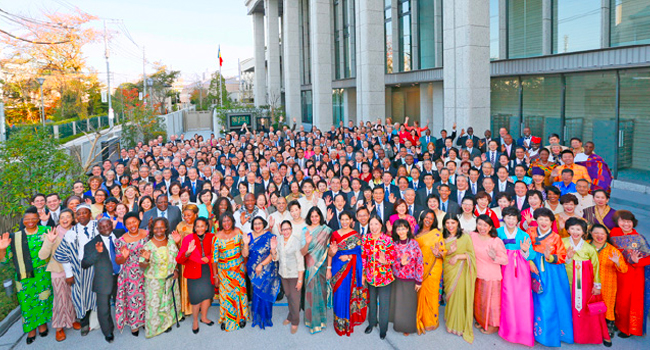
1991 | Spiritual Independence
In November 1991, having long supported its development, the Soka Gakkai marked its separation from the authoritarian and tradition-bound Nichiren Shoshu priesthood under Abe Nikken as the start of its spiritual independence.
By 2008, spurred by greater freedom to adapt to local cultures and the modern world, membership had expanded to 192 countries and territories around the world.
In November 2013, the Hall of the Great Vow for Kosen-rufu opened in Shinanomachi, Tokyo, as a place where Soka Gakkai members from around Japan and throughout the world could chant Nam-myoho-renge-kyo together, renewing their pledge to work for peace and deepening their commitment to sharing the empowering philosophy of Nichiren Buddhism.
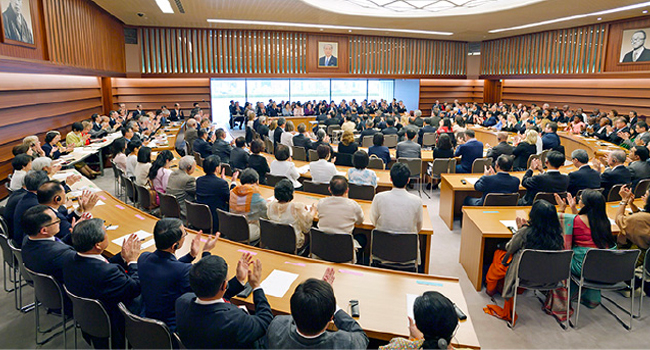
2017 | Soka Gakkai Constitution
In 2017, the Soka Gakkai adopted its new Constitution, clarifying the role of the founding presidents, basic aspects of its global administration, its essential doctrinal stance and objectives of promoting Nichiren Buddhism for the sake of peace and human happiness.
In 2021, the SGI Charter was updated and adopted as the Soka Gakkai Charter, further articulating the principles guiding the organization’s social engagement grounded in an unwavering commitment to nonviolence and the culture of peace.
(Source: sokaglobal.org)
You are reading {{ meterCount }} of {{ meterMax }} free premium articles

